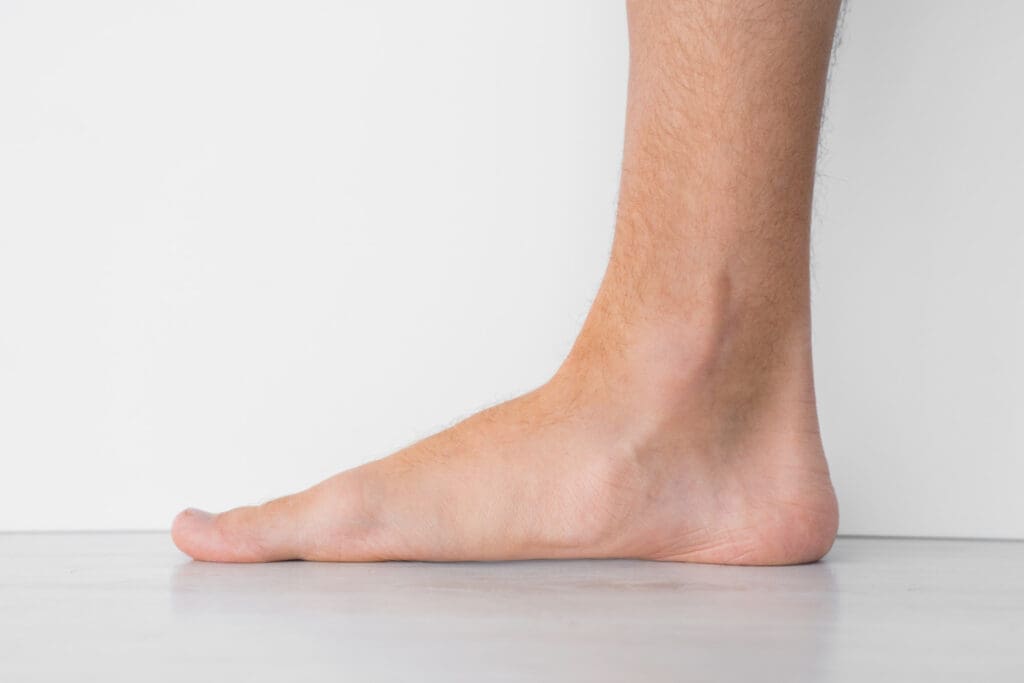Flat feet, a condition where the arches of the feet are lower than normal or completely flat, affect many people worldwide. This means that when you stand up, the entire sole of your foot touches the ground. It’s a fairly common condition and is often simply a variant of normal development. For some, flat feet don’t cause any issues; for others, they can lead to foot pain and discomfort over time. The condition might arise due to genetics or develop from wear-and-tear over the years. It affects people across various stages of life, right from childhood to adulthood. In Milwaukee and Wauwatosa, the demand for understanding and managing flat feet is quite high, given the active lifestyles and varied activities people engage in throughout the year.
Understanding the origins and prevalence of flat feet can help in identifying the best ways to manage and treat the condition effectively. It’s helpful to acknowledge how common the condition is, but it also sheds light on the fact that it’s a manageable issue with the right guidance. By recognizing the symptoms of flat feet early, individuals can take proactive steps to seek medical solutions and prevent potential problems before they escalate.
Symptoms of Flat Feet
Flat feet can manifest in various ways, often leading to pain or discomfort in your feet and lower legs. Recognizing these symptoms is the first step towards addressing the issue effectively. Common symptoms include:
– Foot pain, particularly in the heel or arch area
– Feet that tire easily after standing or walking
– Swelling along the inside of the ankle
– Difficulty standing on your toes
– Shoes wear out more quickly than expected
These symptoms can not only be a source of discomfort but also affect daily activities like walking and standing for extended periods. You might find yourself unable to keep up with daily tasks or enjoy activities you once loved, which can be frustrating. It’s important to note that while some may experience these symptoms regularly, others might only face them after intense physical activities. This variability makes it essential to pay attention to your body and recognize when your arches need extra support.
Understanding these symptoms helps in identifying when to seek advice from a professional. Addressing flat feet early can greatly alleviate the discomfort and prevent the strain that common symptoms of flat feet can cause on your feet, legs, and even your back.
Medical Solutions for Flat Feet
When flat feet start causing trouble, exploring medical solutions can be a game-changer in bringing relief and comfort. There are several ways to address the condition, each tailored to the individual’s needs. One of the most common treatments is the use of custom orthotics. These specially designed shoe inserts provide the support that flat arches require, helping redistribute weight and alleviate pain.
Physical therapy is another effective option. Exercises geared toward strengthening the muscles in your feet and legs can significantly enhance stability and decrease discomfort. Therapists often work with patients to improve flexibility, which can reduce the strain on the feet.
Here are a few advanced treatments used by specialists:
– EPAT Shockwave: This non-invasive treatment uses pressure waves to stimulate healing in the affected area, promoting faster recovery.
– Class IV Pain Laser: By using laser light, this procedure targets and reduces inflammation, fostering pain relief.
These solutions not only provide immediate relief but also work over time to improve foot health and function. It’s important to have an experienced specialist guide you through these options, ensuring you choose the treatment that best suits your lifestyle and needs.
Preventing Complications from Flat Feet
Taking steps to manage flat feet at home can be very beneficial in preventing complications. Simple changes like wearing supportive footwear are crucial for minimizing discomfort during everyday activities. Look for shoes with good arch support and a stable heel, as they can dramatically improve foot alignment.
Adding some exercises to your routine can also help. Focusing on calf stretches and heel cord stretches can improve flexibility and strength, keeping your feet in better condition. These exercises are easy to perform and fit well into most daily routines.
However, these at-home strategies might not always be enough. If pain persists or if new symptoms develop, it’s wise to seek professional help sooner rather than later. Specialists can offer tailored treatments that go beyond what you can do by yourself, and their support can make a significant difference in your comfort and mobility.
Keeping Your Feet Comfortable All Year Round
Dealing with flat feet means understanding the importance of regular care and attention. It’s a journey of learning the best ways to support and protect your feet. By adopting preventive measures and seeking professional guidance when needed, you can enjoy an active and comfortable lifestyle all year round.
Your feet are the foundation of mobility, and taking care of them pays off in the long run. By investing a little time and effort into understanding flat feet and implementing the right solutions, you’re setting yourself up for a healthier future. Whether you’re navigating the lively streets of Milwaukee or taking a quiet walk in the park, maintaining your foot health ensures you stay comfortable and active, every step of the way.
For those seeking additional guidance on managing flat feet, consider consulting a flat feet specialist to explore tailored treatments that suit your lifestyle. Visit Waukee Feet to learn more about your options. By engaging with experts, you can ensure your feet are well-supported and ready for every step.

